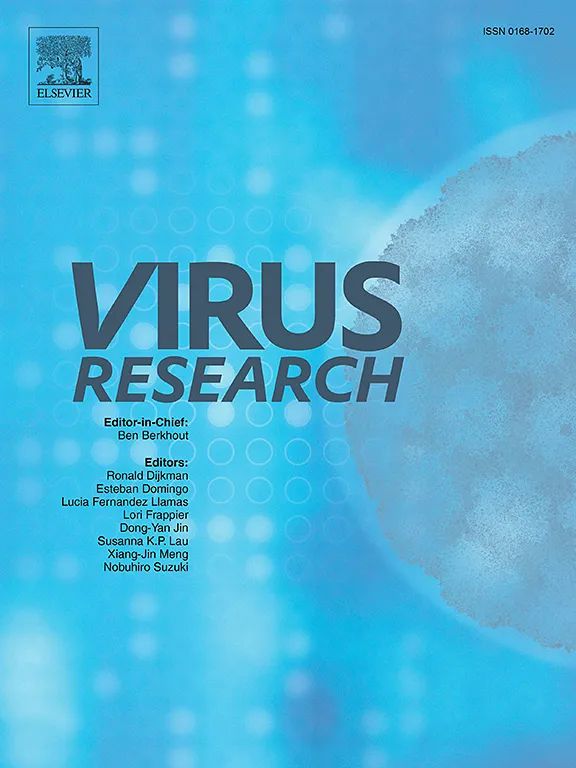松树根腐病病原体 Heterobasidion annosum 的病毒传播频率。
IF 2.5
4区 医学
Q3 VIROLOGY
引用次数: 0
摘要
联合使用杂环病毒 13 和 15(HetPV13-an1 和 HetPV15-pa1)被认为是一种很有前景的防治杂环病毒根腐病和茎腐病的生物防治方法。之前的一项研究发现,HetPV15-pa1 在双分病毒感染供体中的传播频率高于单分病毒感染供体。在本研究中,我们纳入了更多的受体分离株,以评估这种现象是否普遍存在于不同的宿主株系中,并使用总共 45 对不同的 H. annosum 供体-受体在人工培养基(体外)上进行了传播实验。除了研究双重部分病毒感染是否会提高HetPV13-an1和HetPV15-pa1的传播率外,我们还首次研究了共同感染的ssRNA病毒与部分病毒同时传播的效率,以及受体中预先存在的ssRNA病毒是否会影响病毒的传播。一般来说,HetPV13-an1和HetPV15-pa1病毒从单分型病毒感染供体和双分型病毒感染供体向大多数annosum受体株的传播率都很高,只有少数例外。然而,与之前的实验不同的是,双分病毒感染供体的传播频率并不高。此外,瘤胃病毒也能在环斑蘑菇菌株之间传播,但受体中存在另一种瘤胃病毒可能会影响传播效果。本文章由计算机程序翻译,如有差异,请以英文原文为准。
Virus transmission frequencies in the pine root rot pathogen Heterobasidion annosum
The combined use of Heterobasidion partitiviruses 13 and 15 (HetPV13-an1 and HetPV15-pa1) is considered a promising biocontrol approach against Heterobasidion root and butt rot. In a previous study, the transmission frequency of HetPV15-pa1 was found to be higher from a double partitivirus-infected donor than from a single partitivirus-infected donor. In this study, we included a wider array of recipient isolates to assess whether the phenomenon is widespread across different host strains and conducted transmission experiments on artificial media (in vitro) using a total of 45 different H. annosum donor-recipient pairs. In addition to investigating whether double partitivirus infection improves the transmission of HetPV13-an1 and HetPV15-pa1, we examined for the first time how efficiently co-infecting ssRNA viruses are concomitantly transmitted with the partitiviruses, and whether pre-existing ssRNA viruses in the recipients affect virus transmission. Generally, the transmission rates of HetPV13-an1 and HetPV15-pa1 were high from both single partitivirus-infected and double partitivirus-infected donors to most of the H. annosum recipient strains, with few exceptions. However, in contrast to previous experiments, the transmission frequency was not higher from the double partitivirus-infected donors. Also, ourmiavirus was transmitted between H. annosum strains, but the presence of another ourmiavirus in the recipient might affect the efficacy.
求助全文
通过发布文献求助,成功后即可免费获取论文全文。
去求助
来源期刊

Virus research
医学-病毒学
CiteScore
9.50
自引率
2.00%
发文量
239
审稿时长
43 days
期刊介绍:
Virus Research provides a means of fast publication for original papers on fundamental research in virology. Contributions on new developments concerning virus structure, replication, pathogenesis and evolution are encouraged. These include reports describing virus morphology, the function and antigenic analysis of virus structural components, virus genome structure and expression, analysis on virus replication processes, virus evolution in connection with antiviral interventions, effects of viruses on their host cells, particularly on the immune system, and the pathogenesis of virus infections, including oncogene activation and transduction.
 求助内容:
求助内容: 应助结果提醒方式:
应助结果提醒方式:


